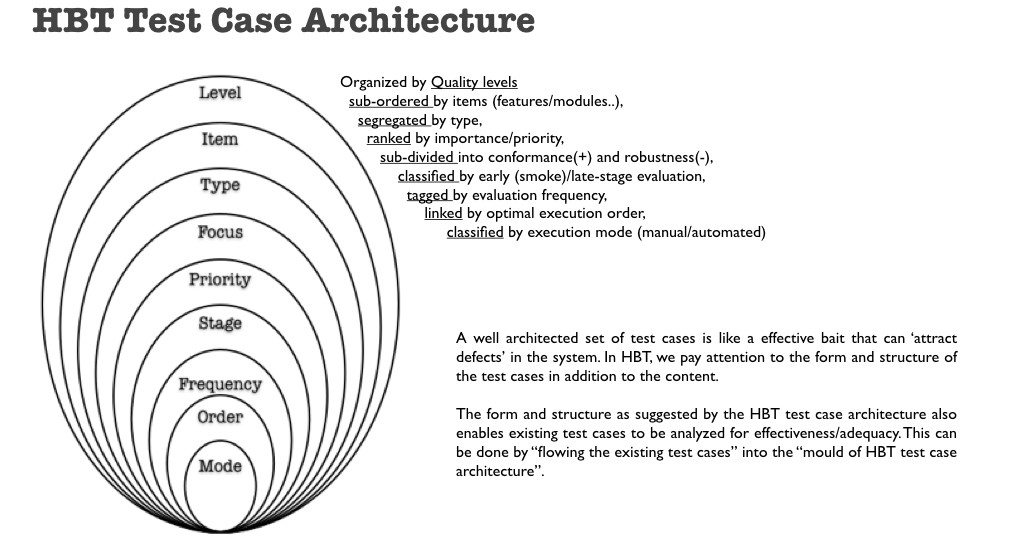The test cases in HyBIST has a NINE-dimensional form (or shape), with each dimension focusing on a specific attribute of goodness of the test case.
The nine dimensions are are as shown below:
| 1 | Cleanliness level | What level of quality or cleanliness are these (test cases) focused on? |
| 2 | Entity being validated | Is it an elemental component, technical feature or business flow? |
| 3 | Potential defect type expected to be uncovered | What type (or class of defect) is it expected to uncover? And the types of tests needed to uncover these? |
| 4 | Focus (Conformance or Robustness) | Does it validate the correct use or recover-ability in the case of abuse? |
| 5 | Priority/Importance | The perceived importance of the test case to the overall customer experience. |
| 6 | Stage it needs to be executed | At what stage of development is it expected to be executed?- Sanity check, Validation check,Regression. |
| 7 | Intended execution frequency | How frequently do we expect these to execute? Daily, weekly, once a build, etc. |
| 8 | Optimal sequencing or threading of test cases | Which is the next text case to execute when the current one fails? This is especially useful for test automation to ensure that we do not “baby sit” the scripts to ensure unattended long runs. |
| 9 | Mode of execution | How do we intend to execute? Manually or Automated? The first FOUR dimensions focus on efficacy aspects of test cases while the remaining FIVE dimensions focus on efficiency of execution. |
